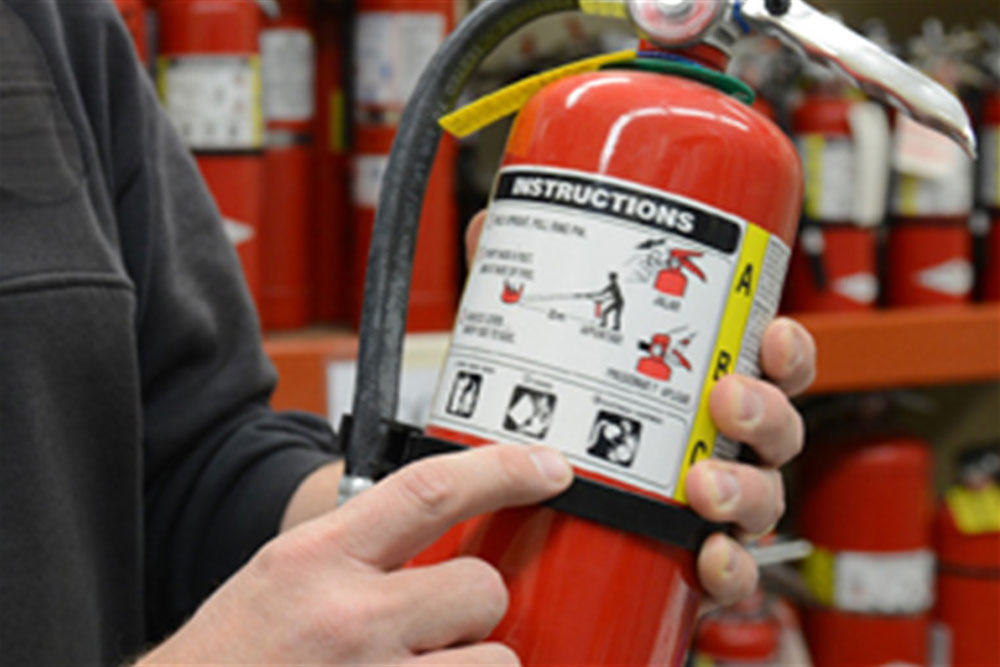 24
Apr
24
Apr
What Do The Symbols On A Fire Extinguisher Indicate?
- 0 Comment(s)
- April 24, 2025
When you look at a fire extinguisher, you might notice various symbols displayed on the label. These symbols are important for identifying the type of fire each extinguisher is suitable for. Learning about these symbols helps you choose the right extinguisher for different types of fires–guaranteeing the safety of yourself and others. So, what do the symbols on a fire extinguisher indicate?
The Importance of Fire Extinguisher Symbols
The symbols on fire extinguishers are there to offer quick, easy-to-understand guidance about the types of fires the extinguisher is designed to handle. Different types of fires require different extinguishing agents.
The symbols allow users to quickly identify the proper extinguisher for a particular fire risk. This can be important in emergency situations where every second counts.
In many countries, these symbols are part of safety regulations. They confirm that fire extinguishers are marked in a clear, standardized way. This makes it easier for everyone to use them properly.
What Do the Symbols on a Fire Extinguisher Indicate?
Class A Symbol
The Class A symbol shows a triangle with the letter “A” inside. These fires involve common materials like wood, paper, cloth, and plastics.
Class A fires are the most common type. These materials are typically the ones found in homes, schools, and offices. A fire extinguisher with this symbol will help extinguish these types of fires effectively.
Class B Symbol
The Class B symbol is a square with the letter “B” inside. These fires occur with flammable liquids such as gasoline, oil, and solvents.
Class B fires can be dangerous because they spread quickly and are harder to control. It is important to use the correct extinguisher, such as a foam or CO2 extinguisher, for these types of fires to avoid further spreading the fire.
Class C Symbol
The Class C symbol is a circle with the letter “C” inside. This symbol indicates that the fire extinguisher is safe to use on electrical fires. Electrical fires can occur when wiring, appliances, or machinery overheat and ignite.
Class C fires require special extinguishers that do not conduct electricity. Using a regular water-based extinguisher can be dangerous. It might result in electrical shock.
Class D Symbol
The Class D symbol is a star with the letter “D” inside. These fires involve combustible metals, such as sodium, magnesium, and potassium.
Metal fires behave differently from other fires and require specific extinguishing agents, such as dry powder, to put them out. Class D fires are rare but can be extremely dangerous if not handled properly.
Class K Symbol
The Class K symbol is a square with the letter “K” inside. These fires involve fats or cooking oils, often found in commercial kitchens.
Class K fires, often found in commercial kitchens, require special extinguishing agents like wet chemical solutions. These are designed to cool and suppress the fire while preventing re-ignition.
Understanding Multi-Class Symbols
Some fire extinguishers may feature multiple symbols to indicate that they are suitable for more than one class of fire. For example, an extinguisher labeled with both Class A and Class B symbols indicates that it can handle both ordinary combustibles and flammable liquids.
These types of extinguishers are often dry chemical or foam extinguishers. They are designed to handle a wide range of fire types.
The Role of Fire Extinguisher Symbols in Safety
The symbols on fire extinguishers play a significant role in fire safety. They help you use the right equipment for each fire risk, preventing accidents and injuries. Fire extinguisher symbols also make it easier for people without specialized knowledge of fire safety to quickly identify and use the correct extinguisher in an emergency.
In addition to fire extinguishers, other fire safety services, such as fire alarms, emergency lights, and signage, are necessary components of a well-rounded safety system. Regular maintenance of these systems means they are always ready when needed.
Choosing the Right Fire Extinguisher for Your Needs
When selecting a fire extinguisher for your home or workplace, look for the symbols that indicate the type of fire it can handle. It is important to match the extinguisher to the specific fire hazards in your environment. For example, a kitchen may require a Class K fire extinguisher, while an office might need a Class A or Class B extinguisher.
If you are unsure which extinguisher is best for your needs, consider seeking professional advice. Regular inspections of fire extinguishers are also necessary to make sure they are functioning properly and ready to use.
Yadkin Fire & Safety offers a range of fire extinguishers and other fire safety services to help businesses and homeowners stay protected. Our team can assist with the selection, installation, and maintenance of fire extinguishers so that your fire safety equipment meets all necessary standards.

